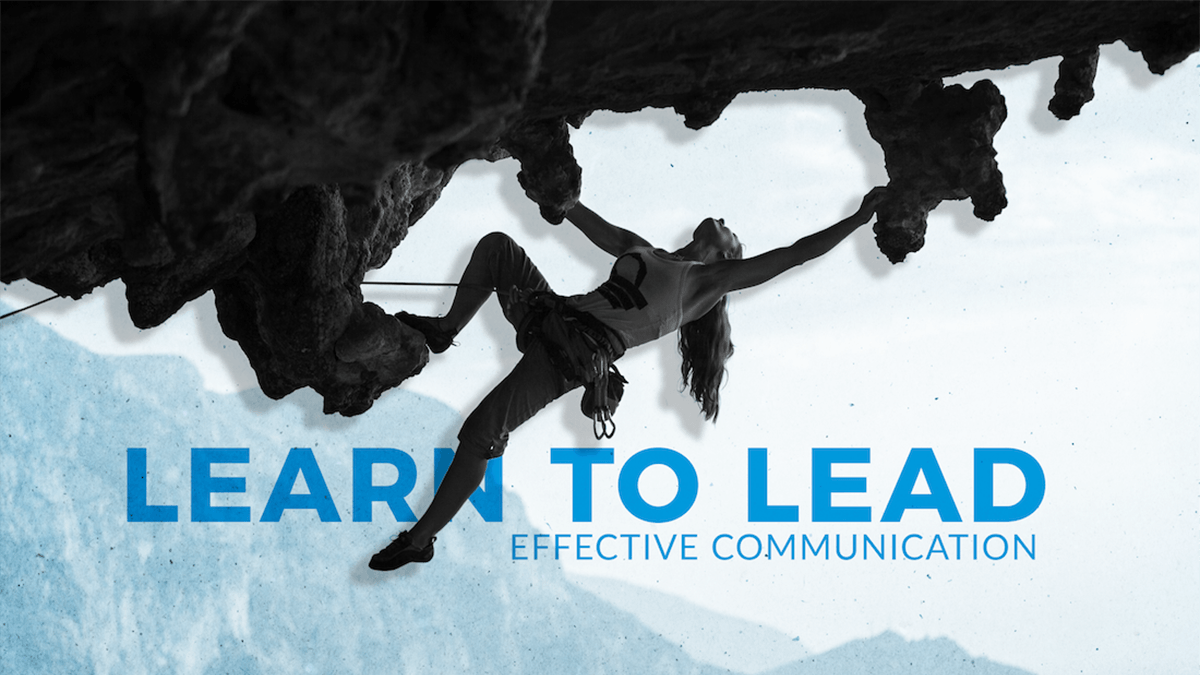Learn to Lead Climb: Effective Communication

The time spent as a belayer and climber requires a high level of trust. An essential part of any trusting relationship is communication. If you are not a well-seasoned climber or leader, establish communication vocabulary and methods before a climb. You are responsible for keeping everyone within your party safe and any other climbing parties within earshot. There will be unique understandings of communication within each climber/belayer relationship, but some key elements apply to any climbing communication.
Before beginning any climb, talking with your partner to establish guidelines for the route is key. For a first-time leader, it is important to select a relatively low-key route, ideally, one that both parties have comfortably climbed in the past. This way, the leader will feel more comfortable making the moves and can focus on clipping (or gear placement) and rope management. As a belayer, you must be patient and mindful of your partner’s abilities, so choose a route you are both comfortable with.
There are certain climbing terms that are standard practice and can simplify and streamline your and your partner’s communications.
Basic Belay Commands
Here are some basic commands for the belayer:
- Belay on! – this signifies that the belayer is ready to begin the climb and has set their rope and device for the ready.
- Climb on! – this lets the climber know the belayer is ready for them to make their next move.
- Halfway! – This lets the climber know that the belayer has half of the rope left to use.
- Two-oh! Four-oh! Etc. -The belayer lets the climber know how many meters of rope are left to use (twenty or thirty meters).
- Belay off! – The belayer has taken the rope out of their device. They are no longer monitoring the climber.
For the Climber
The climber has their own set of vocabulary to use throughout a climb:
- That’s Me! – This is used when the belayer stands at the top of a climb. The climber lets the belayer know that the rope has tugged them at the beginning of a pitch. The belayer has gathered all the slack rope, and they are ready to begin.
- Slack! or Clip! – The climber lets their partner know they need more rope to continue.
- Up Rope! or Take! – The belayer can pull in the slack rope.
- Climbing! – The climber lets their partner know they are ready to start climbing.
- Watch Me! / Tension! – The climber is making a move into which they might fall. They ask their partner to be mindful.
- Falling! – The climber needs immediate tension as they have lost control.
- Off Belay! – They let their partner know when the climber is tied to a rock or no longer needs assistance.
- Additionally, these two words have universal meaning in the climbing community and can be used to protect those around you.
- Rope! – At the top of a climb, anyone can call this loudly to throw the rope for a rappel or to send the top rope back down.
- Rock! – Anyone yells this repeatedly if there is a falling rock. They should continue to shout until they see that everyone has gotten out of the way.
Raise Your Voice!
Exclamation points follow all of these vocabulary words because, as a partner in climbing, you must ensure your volume is high with every command.
There will be times when other noises or distances impair communication during a climb between the belayer and the climber. You could be near traffic, or the wind has picked up. In those instances, it is important to establish non-vocal or other specific ways of communication. Simple rope tugs can come in handy when it is hard to hear your partner. If you are sure, there will be impediments to your vocal communication during a climb, bringing along 2-way radios can be a real saver for your climb (although you don’t see this often).
There may also be times when you find yourself around other climbing pairs within earshot. You and your partner should get into the habit of using your names along with your commands. That will keep any confusion with other climbing pairs out of the way. The other climbers around you will thank you for it (or not, but at least you don’t look like a Gumby).





